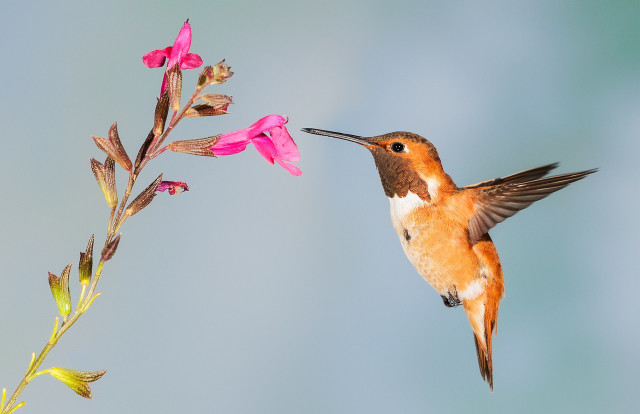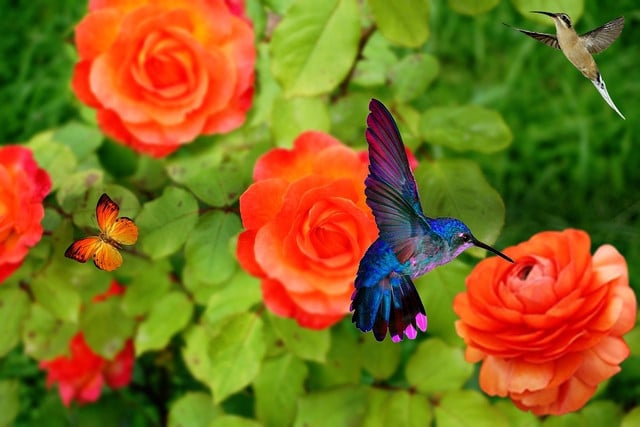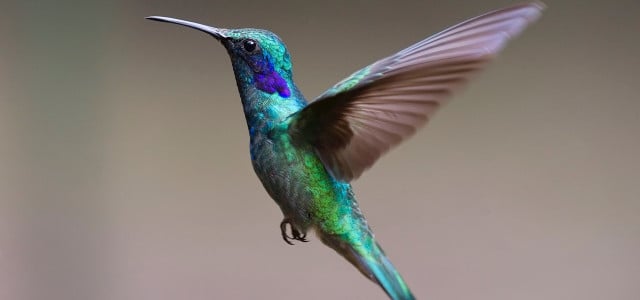Have you ever wondered where do hummingbirds go in winter? We'll take a look at where these fascinating little birds migrate to during the colder months.
Currently, there are hundreds of different species of hummingbird, including the two most common — the broad-tailed and rufous. They can be found in several different countries across the world, including Alaska and South America. In fact, they are native to the Americas and are usually found in warmer climates.
In the summer months, hummingbirds can be found in Arizona, Northern Mexico, and New Mexico. They tend to like areas that are filled with flowers and flowering shrubs and can be found in woodlands, mountain meadows, tropical rainforests, and deserts, to name a few. These flower-filled areas are important for hummingbirds, as they are adapted for eating the nectar they provide. However, where do hummingbirds go in winter?
Where Do Hummingbirds Go in Winter?

(Foto: CC0 / Pixabay / fprose)
Where do hummingbirds go in winter? Due to their love of warmer climates, it is only natural for this species of bird to want to migrate to warmer areas. During winter, hummingbirds like to relocate to southern Mexico, Central and South America, where temperatures tend to be warmer. This journey often takes them through the western United States, like California or Utah.
However, is this the case for every hummingbird species? Some species of hummingbirds have different migration patterns during the winter months. For example, one species known as Anna’s hummingbird tends to stick to one area all year round.
Here are the migration patterns for some other hummingbird species:
- Costa’s hummingbird: Migrate to southern Mexico and southern California during winter.
- Broad-tailed hummingbird: Migrate north in the spring and then head south in winter toward Guatemala and South Mexico.
- Black-chinned hummingbirds: Migrate to southern Arizona, southern Texas, Mexico, or southern California, or Mexico during the winter months.
- Allen’s hummingbirds: This species has a more limited nesting range. In winter, they nest in southern Mexico before moving to the Pacific Coast later in the winter months. During other seasons, such as summer, they are often found in California.
If you live in any of these areas or states, then you may even be lucky enough to spot one. However, as mentioned earlier, they prefer areas filled with flowers, with plenty of options for nesting and feeding.
How to Help Hummingbirds in Winter



(Foto: CC0 / Pixabay / IvaCastro)
Due to the destruction of their natural habitats and the use of pesticides, hummingbirds are becoming increasingly endangered. Some endangered hummingbirds include the white-tailed hummingbird, found in Mexico, and the scissor-tailed hummingbird, found in Venezuela. So, what can you do to help these birds during winter?
- Provide food: You can make your own hummingbird nectar recipe to provide some much-needed fuel for your feathered friends.
- Flowers: Plant some hummingbird-friendly flowers in your garden, such as petunias, bee balms, columbines, daylilies, and foxgloves. Do your research to find out which is most suitable. These will help to provide plenty of food for them.
- Feeders: Buy some extra feeders and keep them full. You can rotate these to prevent freezing. Make sure to clean them regularly. This is vital to prevent harming and potentially killing hummingbirds due to a build-up of bacteria and fungus that could cause infections. If you are unsure how to clean a feeder properly, make sure to do your research online. Perhaps try a shallow nectar feeder dish to start.
- Insulation: Wrap some insulation around your feeders to keep them from freezing. You could use some lagging tape or an old scarf, or you could even buy a heated feeder.
Helping out your hummingbird friends may help them to survive the colder winter months. If you ever think a hummingbird may be in danger, don’t be afraid to call the correct service for help, like the Humane Society or the International Wildlife Rehabilitation Council (IWRC).
Read more:
- Water for Birds: Helping Refresh Our Feathered Friends
- How to Stop Birds from Flying into Your Window
- What to Do If You Find a Baby Bird: How to Help
Do you like this post?






